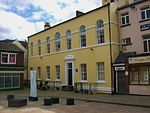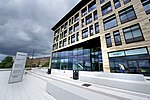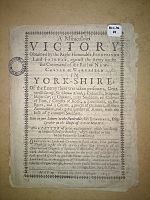City of Wakefield

Wakefield, commonly known as the City of Wakefield, is a local government district with the status of a city and metropolitan borough in West Yorkshire, England. Wakefield, the largest settlement, is the administrative centre of the district. The population of the City of Wakefield at the 2011 Census was 325,837. The district includes the Five Towns of Castleford, Featherstone, Knottingley, Normanton and Pontefract. Other towns include Hemsworth, Horbury, Ossett, South Elmsall and South Kirkby (also forms the civil parish of South Kirkby and Moorthorpe). The city and district are governed by Wakefield Council from the County Hall. In 2010, Wakefield was named as the UK's third most musical city by PRS for Music.
Excerpt from the Wikipedia article City of Wakefield (License: CC BY-SA 3.0, Authors, Images).City of Wakefield
Bull Ring, Wakefield Eastmoor
Geographical coordinates (GPS) Address Nearby Places Show on map
Geographical coordinates (GPS)
| Latitude | Longitude |
|---|---|
| N 53.683 ° | E -1.499 ° |
Address
The Lockwood
Bull Ring 14
WF1 1HA Wakefield, Eastmoor
England, United Kingdom
Open on Google Maps











